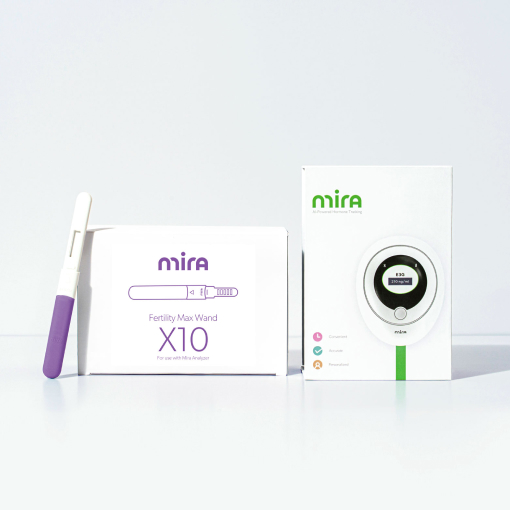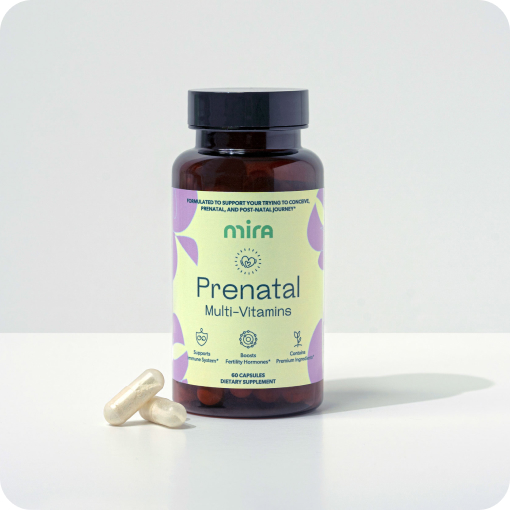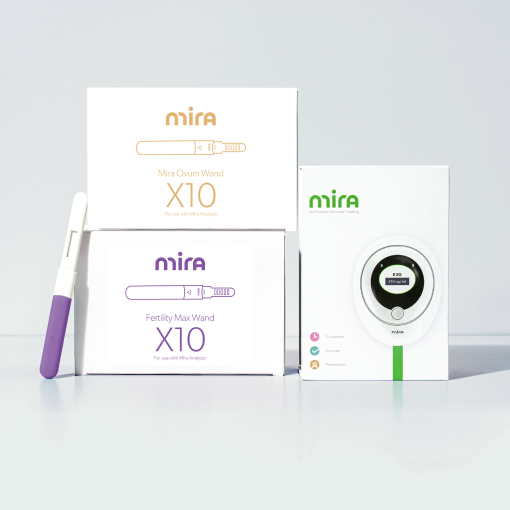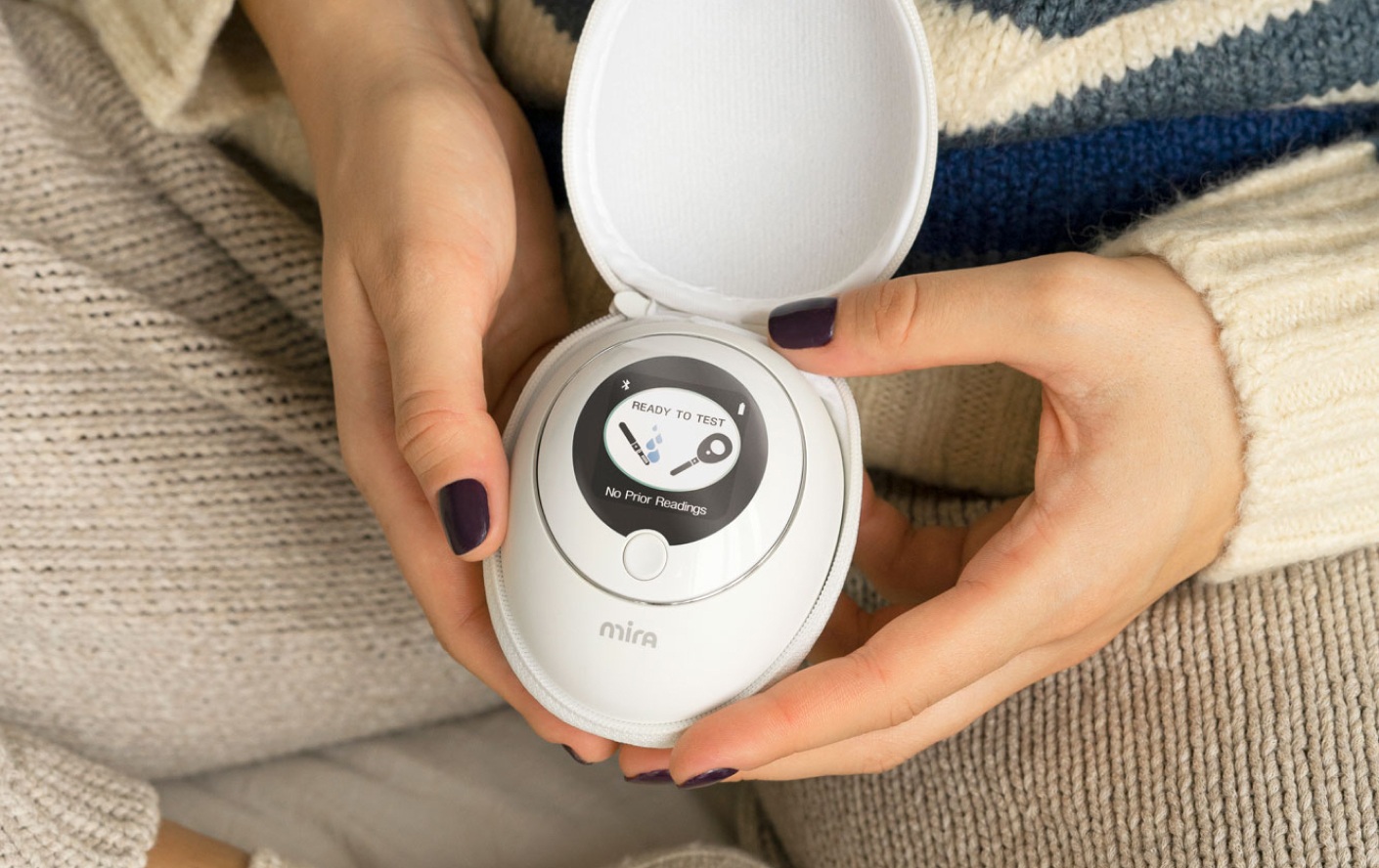13 Ways to Not Get Pregnant

Pop “how to not get pregnant” into any search bar and you’re sure to find a range of advice – some good, some not so good. The truth of the matter is that abstinence is the only way to really postpone pregnancy since this ensures the sperm and egg will never meet. But if practicing abstinence isn’t a realistic option, there are other methods you can consider.
Being aware of your options and learning how each one works is a key factor to take control of your health and fertility. In this post we’ll take a look at 13 different ways to not get pregnant and methods you can use to help you.
Is it hard to not get pregnant if you’re sexually active?
According to the American Pregnancy Association, a healthy young woman having frequent sex only has a 20% chance of pregnancy each month with regular intercourse. There is a relatively short window during a woman’s menstrual cycle that is ideal for conceiving so whether a woman is on birth control or not, the conditions for conception are not usually ideal.
And while no day is completely safe when it comes to NOT getting pregnant, tracking your cycle and knowing your fertile signs can help you make decisions to make your chances extremely low. If you don’t want to get pregnant while still being sexually active, there are many tools available to consider.
How to not get pregnant
Whether you choose to use a contraceptive method or monitor your body for fertility signs, there are many options to consider.
Contraception
From hormonal to barrier methods, there are a number of contraceptive options to choose from when it comes to birth control. Ultimately your decision will come down to safety, availability, affordability, and even acceptability as well as what works best for you and should ideally be discussed with your doctor.
Male condoms
Male condoms are thin, stretchy pouches worn on the penis during sex and provide barrier protection from pregnancy by stopping sperm from getting into the vagina. They work by collecting the semen before it enters the vagina so it has no chance of meeting up with the egg. Condoms come in latex, non-latex, and animal skin varieties and some even help prevent STIs. With proper use, condoms are 98% effective at preventing pregnancy but work best when used correctly.
Female condoms
Female condoms, also called “internal condoms” are similar to male condoms in that they are a form of barrier protection against pregnancy. But unlike male condoms, they don’t go over the penis and are a pouch worn inside the vagina to prevent sperm from entering and meeting an egg.
Like male condoms, they also provide some protection against STIs and because they cover the inside of your vagina and some parts of your vulva, they also decrease your chance of coming into contact with pre-cum (which can lead to pregnancy). Although they were originally called “female” condoms, they are now more commonly referred to as “internal” condoms as people of any gender can use them for vaginal sex.
IUDs
An IUD or Intrauterine Device is a tiny device inserted into your uterus to prevent pregnancy and is one of the most effective birth control methods. Some IUDs are copper, but most are hormonal, meaning they use a hormone to prevent pregnancy. The hormone progestin, similar to the progesterone we make naturally, prevents pregnancy by thickening cervical mucus and even stopping ovulation. Copper IUDs work by preventing sperm from getting to the egg due to the copper material.
IUDs provide effective birth control for many years (depending on which kind you get) but aren’t permanent. Your fertility bounces back right away after removal and there are no long lasting effects on your fertility. They can even be used as emergency contraception as they are more than 99% effective.
Birth control
Most people are familiar with the birth control pill, but hormonal birth control also includes skin patches, vaginal rings, shots, and implants. They prevent pregnancy by using hormones similar to the ones already in your body to stop the release of an egg. No egg released means sperm never has a chance to meet and fertilize it and therefore no pregnancy takes place. Although birth control is good at preventing pregnancy, it offers no protection against STDs and must be used correctly to offer the best protection.
Emergency contraception (morning after pill)
Although certain IUDs offer emergency contraception and are the most effective, most people are familiar with emergency contraception in the form of the morning after pill. If taken within 72 hours (3 days) after sex, emergency contraception makes it much less likely that you will get pregnant.
Many people keep the morning-after pill at home to use as soon as possible if needed. Morning-after pills work by releasing hormones to temporarily stop ovulation and the timing is incredibly important. Success depends on where you are in your cycle and when you took the pill: if your body has already started ovulating, most pills won’t work
It’s important to note that emergency contraception prevents a pregnancy from happening and does not cause an abortion. It won’t harm an existing pregnancy, but it won’t work if you are already pregnant as emergency contraception is a form of birth control and not an abortion.
Sterilization
Sterilization is a type of surgical procedure that permanently prevents pregnancy. The type of sterilization depends on the procedure being performed. In a tubal ligation, the fallopian tubes are permanently closed, cut, or removed whereas a bilateral salpingectomy removes the fallopian tubes entirely. Sterilization removes the possibility of pregnancy from ever occurring because the sperm can’t get to the egg and fertilize it. This procedure is commonly referred to as having your “tubes tied” regardless of which type of procedure you undergo.
Abstinence
Abstinence is technically defined as not having sex, but can mean different things to different people. As a form of birth control, it helps avoid a pregnancy by preventing semen from reaching the egg for fertilization. For some people, abstinence means a complete lack of sexual activity, while for others it means not having vaginal sex.
Spermicidal lubricant
With this type of birth control, a gel is inserted into the vagina to stop the sperm from reaching an egg. The gel or substance contains chemicals that impairs sperm movement so it can’t swim to the egg. Despite the name, spermicide doesn’t actually kill sperm, it simply slows it down so it can’t reach the egg. Inserted deep into the vagina, spermicidal lubricant may come in cream, gel, film or foam format. There are even some that are suppositories that melt into a cream inside your vagina.
Monitoring your body
Also known as fertility awareness, monitoring your body is a form of natural conception that helps you estimate when your fertile window is so you can skip sex when you’re most likely to get pregnant. When used consistently and correctly, fertility awareness is almost 90% effective at preventing pregnancy.
If you are using fertility awareness methods (FAMs) to not get pregnant then you need to be well-informed about FAMs and your cycle. Whether you choose to use the basal body temperature method, cervical mucus method, the calendar method, or the standard days method you’ll need to pay close attention to the signs of fertility as your body responds to changes in your hormone levels throughout your menstrual cycle.
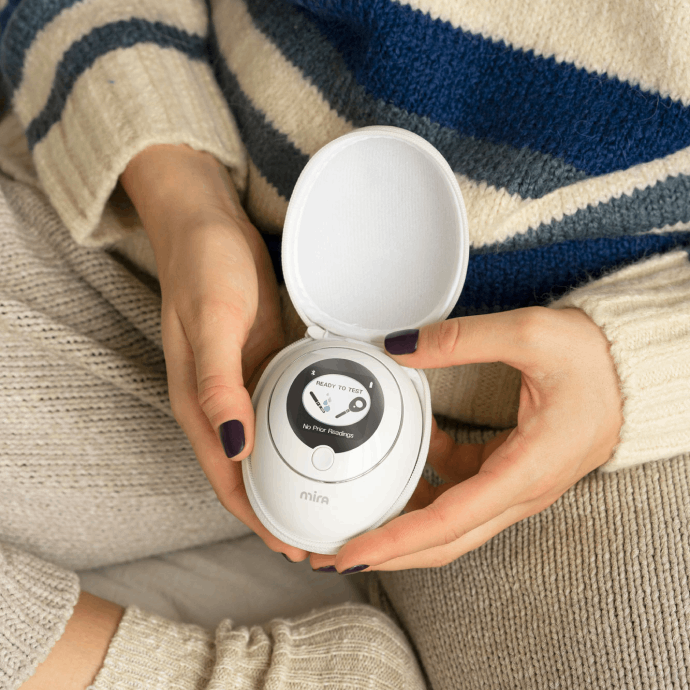
Hormone tracking
Regardless of when you ovulate, your sex hormones follow a predictable path before ovulation. Estrogen usually rises in the three to five days leading to ovulation. Luteinizing hormone (LH) also surges 24 to 36 hours before ovulation, peaking 10 to 12 hours prior to ovulation. The changes in these two hormones cause ovulation and together are one of the most accurate and fundamental signs of ovulation.
Traditionally, hormone tracking would be an expensive and medically monitored procedure unavailable to most women. However, with the rise of home health technology there are now devices and tests available for personalized hormone tracking. Devices like Mira’s digital fertility analyzer help you track hormone concentrations in order to precisely determine your fertile (and infertile) window.
Basal Body Temperature Method
BBT is a natural method of contraception that involves you measuring your body’s resting temperature, or basal body temperature, every morning before getting out of bed. Based on temperature readings (there is a slight rise in BBT after ovulation), women can predict when they are most fertile.
This method relies on accuracy, consistency, and timing and you’ll need a special thermometer to do it correctly. Consistency in taking your BBT requires at least 3 cycles to track your basal body temperature in order to learn your body’s baseline temperature.
Cervical Mucus Method
This method involves monitoring changes in cervical mucus to predict fertile days. Normal cervical mucus is thick, creamy and off-white or yellowish in color. However, around ovulation, it becomes stretchy, clear, and slippery like an egg white. By monitoring the change in consistency, you begin to understand the patterns of your cervical mucus throughout your cycle and predict your fertile days based on this information.
Like BBT, the cervical mucus method of natural contraception requires consistency and time. You’ll need to check your cervix every day and it may take several cycles while you get to know your body’s natural rhythm and discharge characteristics.
Calendar/Calculator Method
Following a basic formula, the Calendar or Calculator Method of natural contraception uses a calendar or cycle calculator to determine your fertile days. By calculating your typical cycle length and tracking the first day of your last period, it is a quick and easy way to determine when you are most fertile.
However, this method has its challenges as it’s based on standard cycle lengths that may not accurately reflect your own (or an irregular) cycle. It has a large margin for error and may not be the most reliable method.
The Standard Days Method
Another calendar-based natural contraception is the Standard Days Method. Stricter than the Calendar/Calculator method, this process uses a fixed window in a woman’s menstrual cycle to determine which days are safe for sex.
In this method, days 8 through 19 (for cycles 26-32 days in length) are used as the fixed window to avoid sex if you do not want to get pregnant. The wide window accounts for variations in ovulation between women and between cycles. There is no real tracking required with this method but, as you can imagine, it is not the most reliable method of contraception, especially for those with abnormal cycles, underlying hormonal conditions, or women who are breastfeeding.
Additional Tips
Use more than one method
Consider using multiple methods. Using more than 1 method will help ensure accuracy and improve your chances of success.
It’s important to note that abstinence is the only true method of avoiding pregnancy, though it’s not always realistic or practical. It’s useful to explore your contraceptive options, such as barrier methods or hormonal birth control, and make sure you are using them correctly when it comes to how to have sex without getting pregnant.
Abstain from sex during your fertile window
In order to effectively postpone pregnancy naturally, a woman must be able to detect the beginning and end of her fertile window. Avoiding sex on the days you are most fertile, or during your fertile window, is key to preventing or postponing pregnancy. Even though you are not equally likely to conceive on every day of your fertile window, your chance of conception is still high. If you are trying to avoid pregnancy you will need to avoid sex during this time.
Recommended for you
Navigate your fertility with peace of mind
FAQs about avoiding pregnancy
When are you most fertile?
You are most fertile during your fertile window. This time frame includes the days leading up to ovulation and the day of ovulation. On average, the fertile window lasts for six days and occurs around mid-cycle.
When are you least fertile?
Your least fertile days are during your actual period or the menstruation phase of your menstrual cycle. According to the Human Reproduction Journal, your chances are lowest on Day 4 of your menstrual cycle.
How likely is it to get pregnant without trying?
The time it takes for a person to get pregnant varies significantly and depends on many factors. There are many lifestyle factors that can impact your fertility and affect how likely it is for you to get pregnant without trying. Doctors typically recommend women under 35 actively try for a year (6 months if you’re over 35) before investigating further issues.
Mira’s Editorial Process
All content produced by Mira meets stringent editorial standards, ensuring excellence and accuracy in language and medical precision. Every piece undergoes thorough fact-checking and review by qualified professionals. Check out our full editorial process to learn more.


